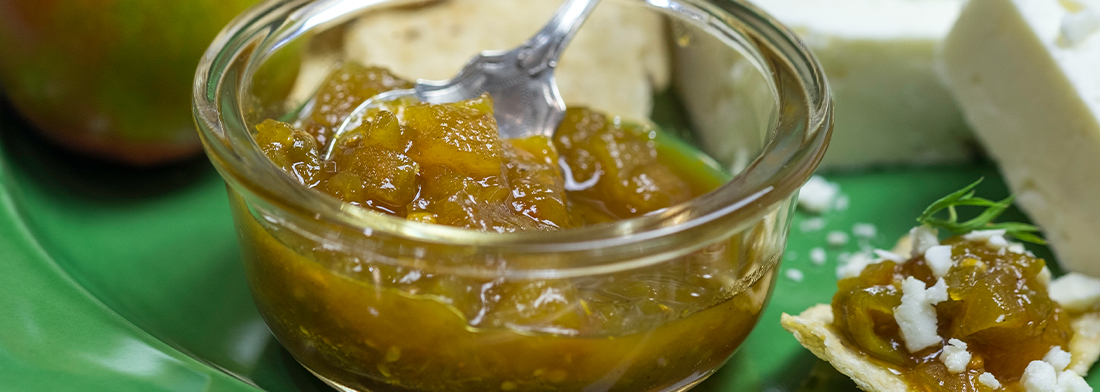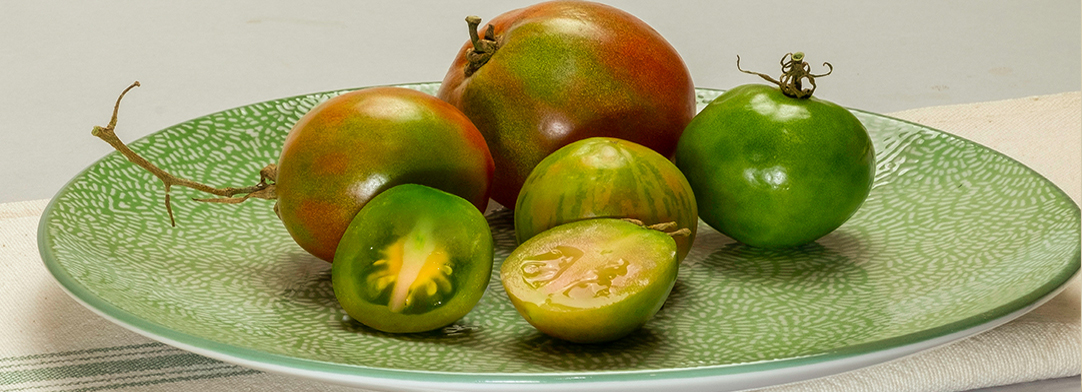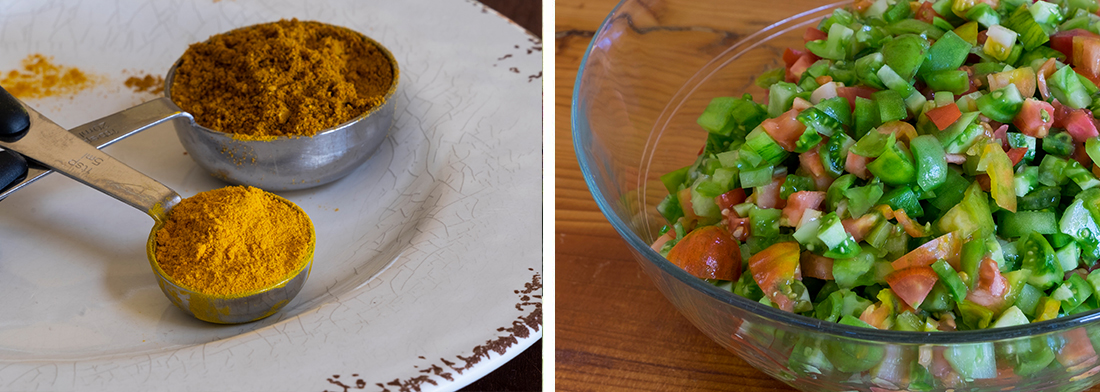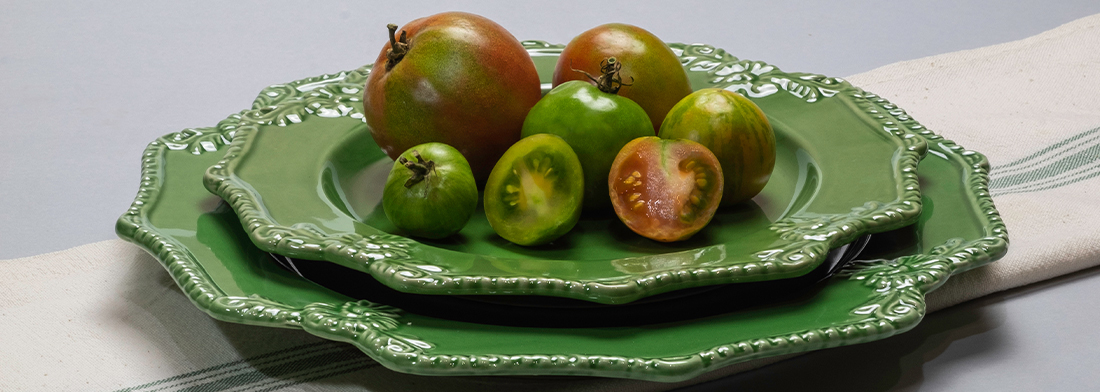Green Tomato Chutney
- Pickles, Chutney, Relish & Sauces

Capture the fresh lively flavour of green tomatoes and apples in this traditional English style chutney. The aromatic flavours of good curry powder and turmeric adds a touch of the orient, arousing the senses with a twist of the lid. For home gardeners, there’s always a kilo or two of green tomatoes left on the vine when it’s time to pull-up the plants in preparation for the autumn planting. Those precious few kilos produce an artisanal batch that will be on everyone’s wish list.
It’s the perfect accompaniment to chicken, pork and lamb, BBQ hamburgers, sausages, vegetable fritters and adds another dimension to a ploughman’s lunch, curry and even poached eggs.
- Preparation Time:
- 30 minutes
- Cooking Time:
- 45 minutes
- Quantity:
- 8 x 325 ml jars
PREPARATION
Sterilise and dry sealable glass jars and non-corrosive lids

INGREDIENTS
- 1.8kg
- Green tomato, chopped
- 900g
- Brown onion, peeled and finely chopped
- 900g
- Granny Smith apples (green cooking apples), peeled, cored, finely chopped
- 900g
- Light brown sugar
- 500ml
- Apple cider vinegar
- 2 tablespoons
- Curry powder
- 2 teaspoons
- Tumeric
- 2 teaspoons
- Salt

METHOD
Place finely chopped onion and apple in a large preserving pan. Add sugar, vinegar, spice and salt. Bring to the boil, turn down and simmer with lid on until the onion is soft.
Wash and dry the tomatoes. Remove the core and any blemishes, Chop and add to the pan. Bring the mixture back to the boil, then turn down again and simmer, without the lid, for approximately 30-40 minutes or until the chutney has a thick consistency. Stir occasionally to prevent the chutney from sticking to the bottom of the pot.
Use a funnel and ladle to pour into warm dry sterilised screw cap sealable jars. Fill to approximately 2.5cm (1 inch) from the top of the jar and seal.
Label and store in a cool dark place in the kitchen or pantry.
Allow the chutney to mature for at least 2 weeks before eating.
NOTES
- Wash and dry tomatoes and apples to remove any shop or garden debris.
- Never use mouldy fruit or vegetables as this will produce a poor-quality chutney.
- For a chunky chutney texture, cut the vegetables into larger pieces. This will slightly increase the cooking time.
- Stir occasionally to prevent the chutney from sticking on the bottom of the pan.
- The cooking time is an approximation only and will depend upon, the size of preserving pan, degree of fruit ripeness and cooking heat.
- The type and colour of the sugar and vinegar used will affect the final colour and flavour of the chutney. Malt vinegar and brown sugar will produce dark brownish chutney with a more earthy/molasses background flavour, while white wine vinegar or apple cider and white sugar or light brown sugar will produce a fresher and brighter tomato flavour. This is a matter of personal choice.
- To test the chutney is cooked to the right consistency, spoon a little of the mixture on to a plate. The chutney should hold its shape.
- Towards the end of the cooking process, it may be necessary to stir regularly. It is important that the fruit does not stick to the bottom of the pan and burn. Your chutney will be tainted with a burnt flavour and it is not very pleasant.
- To make show quality chutney, skin and seed the tomatoes.
- Some preserves can produce a scum while they are boiling. Impurities from the fruit and sugar will rise to the surface and a fine frothy foam will move towards the edge of the preserving pan. Some fruits will produce more scum than others. This is a natural self-clarification process and makes the task of making a high-quality preserve easier. Removing the scum increases the preserve’s clarity. This is very important if it is being submitted for competition. Remove the scum before bottling. Using a stainless-steel spoon, skim the scum from around the edge of the preserving pan. Be careful to remove just the scum and not the jam. This can be done while the preserve is boiling and/or once it has been taken off the heat. Do not attempt to remove the scum from the centre of a boiling pan, as there is a high risk it will splutter and hot preserve burns

